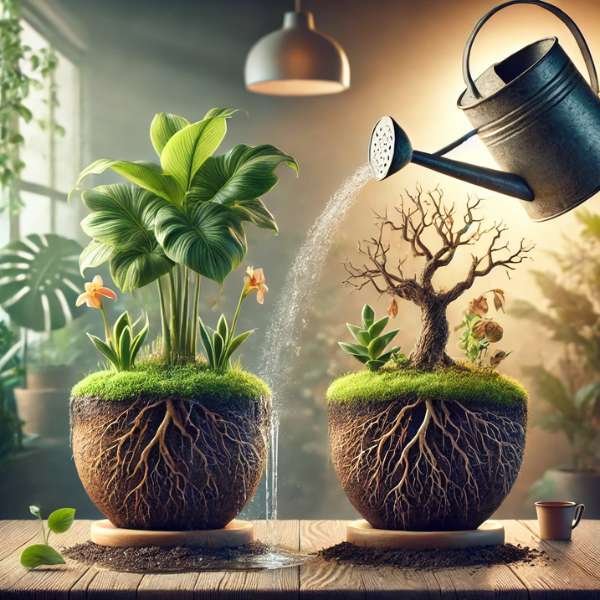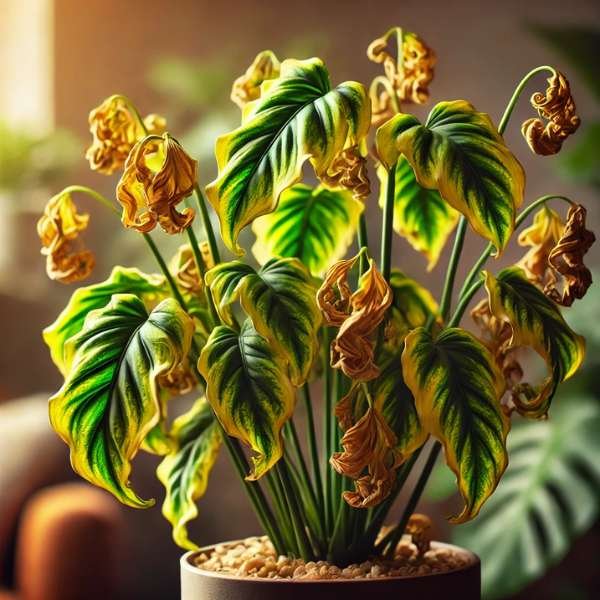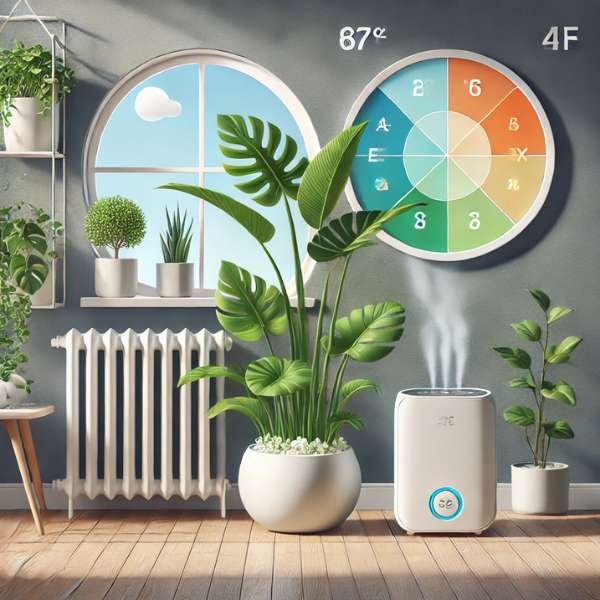Indoor flora deliver existence and freshness to any area, but they could on occasion be afflicted by abiotic illnesses as a result of environmental stress. These problems, not like illnesses from pests or fungi, result from non-dwelling factors like wrong watering, lighting fixtures, or temperature fluctuations. Understanding how to treat abiotic disease in indoor plants is important for keeping them healthy and thriving. In this manual, you’ll analyze the important thing reasons for abiotic strain and a way to correctly deal with and prevent it, ensuring your flora stays vibrant and luxurious.
Understanding Abiotic Diseases in Indoor Plants

Abiotic diseases, those frustrating ailments in your indoor plants, are typically brought on by environmental stressors. These stressors mess with your plant’s normal function and growth. Factors like water, light, temperature, soil quality, and nutrients are essential for any plant’s survival. When any one of these gets out of balance, the plant sends out warning signs. You might notice wilting, discoloration, or stunted growth—symptoms that scream “help!” but aren’t due to pests or pathogens. Instead, these symptoms are your plant’s way of telling you it’s struggling to cope with its surroundings.
The Difference Between Abiotic and Biotic Plant Diseases

Knowing the difference between abiotic and biotic diseases is crucial. While biotic diseases are caused by living pathogens such as bacteria, viruses, or fungi, abiotic diseases stem from non-living causes like poor watering habits or temperature fluctuations. Biotic diseases can spread like wildfire from one plant to another. In contrast, abiotic stress, though equally harmful, cannot leap from one plant to the next. Identifying this distinction early on helps you treat your plants correctly and avoid unnecessary panic.
What Causes Abiotic Disease in Indoor Plants?
Common Environmental Stressors Leading to Abiotic Disease

Indoor plants are heavily reliant on their environment, and if conditions aren’t ideal, they start to suffer. The biggest culprits are poor watering, improper light exposure, temperature swings, poor soil quality, and nutrient deficiencies. Each plant species has its preferences, and even slight deviations can lead to stress.
The Role of Watering in Abiotic Plant Issues

Watering—it sounds simple, but it’s often the root of plant issues (pun intended!). Overwatering leads to suffocated roots and root rot, while underwatering causes dehydration and wilting. The balance is delicate. Each plant has its own hydration needs, so getting familiar with these specifics is key to keeping your plants happy.
How Light Exposure Affects Plant Health Indoors

Plants live and breathe by light—literally. Too little light, and they stretch, becoming weak and leggy. Too much, and their leaves can scorch. Striking that delicate balance between enough sunlight and not frying your plants is vital for their health.
Temperature Fluctuations and Their Impact on Indoor Plants

Indoor plants may look peaceful, but they’re sensitive to temperature changes. Cold drafts from windows or heat blasts from nearby vents can wreak havoc on them, especially tropical species. Stable temperatures within their comfort zone are essential for preventing stress.
The Effect of Poor Soil Quality on Indoor Plant Health

Your plant’s foundation is the soil. If the soil is compacted, lacks nutrients, or doesn’t drain well, the roots have a tough time thriving. Poor soil quality is a major player in creating stressful conditions for your plants, leading to root rot, poor nutrient uptake, and ultimately, abiotic disease.
Nutrient Deficiencies and Their Role in Abiotic Disease

Your plants need a good diet, too. Without essential nutrients like nitrogen, phosphorus, or potassium, they can exhibit disease-like symptoms. Yellowing leaves, stunted growth, or poor flowering often result from these deficiencies. Regular feeding with the right fertilizer helps prevent nutrient-related stress.
How to Identify Abiotic Disease in Indoor Plants
Recognizing Early Signs of Abiotic Stress

Catch it early! Abiotic stress can manifest as droopy leaves, curled foliage, or stunted growth. Your plant may also change color, from vibrant green to sickly yellow. These are cries for help—signals that something in the environment isn’t right. Reacting quickly can save your plant from further decline.
Differentiating Between Abiotic and Biotic Symptoms

Distinguishing between abiotic and biotic symptoms is essential. While abiotic stress usually affects the whole plant uniformly, biotic diseases often start in one area and spread. If all your plant’s leaves are uniformly yellow, it’s likely a watering or nutrient issue, rather than a biotic infection.
Common Visual Symptoms: Leaf Discoloration, Wilting, and Stunted Growth

Plants express their distress in visible ways. Discolored leaves, wilting stems, and stunted growth are all warning signs. Even when you’re diligent with watering, wilting may occur due to root issues—like root rot from overwatering. Each symptom tells a unique story about your plant’s environment and what needs fixing.
How to Treat Abiotic Disease in Indoor Plants
Adjusting Watering Practices for Healthier Plants

Proper watering can make or break your plant’s health. To avoid drowning or dehydrating your plants, always check the soil moisture before watering. Most plants thrive with slightly dry soil between waterings, so resist the urge to overwater.
Proper Light Placement and Choosing the Right Grow Light
When natural light isn’t enough, bring in the backup—grown lights. Choose one that mimics the sun’s spectrum and position it just right, ensuring your plants get the energy they need without suffering from heat exposure.
Managing Temperature and Humidity for Optimal Growth

Indoor plants often require stable temperatures and humidity to flourish. Keep your plants far from drafty windows and avoid placing them too close to heaters. In dry environments, using a humidifier can create a moisture-rich space that tropical plants love.
Improving Soil Quality with the Right Amendments

Good soil is vital. If your soil lacks nutrients or drains poorly, mix in some organic matter like compost or peat moss. This boosts both soil texture and nutrient content, giving your plants the solid foundation they need to grow strong.
Providing Balanced Nutrients to Prevent Deficiencies

Regular feeding with a balanced fertilizer ensures your plants have all the nutrients they need. Tailor your fertilizer choice to your plants’ specific needs—more nitrogen for leafy greens, or extra potassium for blooming plants.
To get rid of white spots on indoor plants, it’s critical to provide balanced vitamins. A deficiency in key minerals, particularly calcium or magnesium, can lead to discoloration. Use a properly-rounded, organic fertilizer that consists of trace elements, and keep away from over-fertilizing. Regularly check soil pH and adjust as needed to ensure the most desirable nutrient absorption, promoting healthier, vibrant flowers.
Preventing Future Abiotic Disease in Indoor Plants
Creating a Consistent Watering Schedule

Consistency is key to avoiding abiotic stress. Find a watering routine that suits your plants’ needs and stick to it. It might take time to perfect, but once you do, your plants will thank you.
Monitoring and Maintaining Ideal Indoor Growing Conditions

Use tools like thermometers and light meters to keep an eye on your indoor environment. These small adjustments can prevent major plant stress, allowing your Vegetation to thrive.
Using High-Quality Potting Soil and Fertilizers

Investing in good-quality potting soil and fertilizer can make all the difference. Well-draining soil and the right nutrients create a solid foundation for plant health, reducing the risk of abiotic disease.
Best Practices for Repotting to Avoid Abiotic Stress

Repotting, if done poorly, can stress your Vegetation. Use the right size pot, handle the roots with care, and ensure the soil is fresh and nutrient-rich. Repot only when necessary to avoid transplant shock.
Reviving Indoor Plants Affected by Abiotic Disease
How to Trim and Prune Damaged Leaves and Stems

Pruning helps restore your plant’s energy. Remove damaged or dead parts with clean, sharp scissors, allowing your plant to focus on new, healthy growth.
How to Use Plant Support Tools (Stakes, Ties, etc.)

Weakened Vegetation may benefit from support tools like stakes or ties. These provide stability, helping your plant regain its strength and grow upright without suffering further damage.
Conclusion
Abiotic disease may be overwhelming, but with the proper understanding, it’s practicable. By keeping a close eye on your plant’s surroundings and making well-timed changes, you may turn your suffering vegetation into thriving indoor companions. Take the time to nurture them, and also you’ll be rewarded with a colorful, wholesome boom. Treating abiotic disorder is an adventure, however, with endurance and consistency, your indoor garden will flourish once again.

